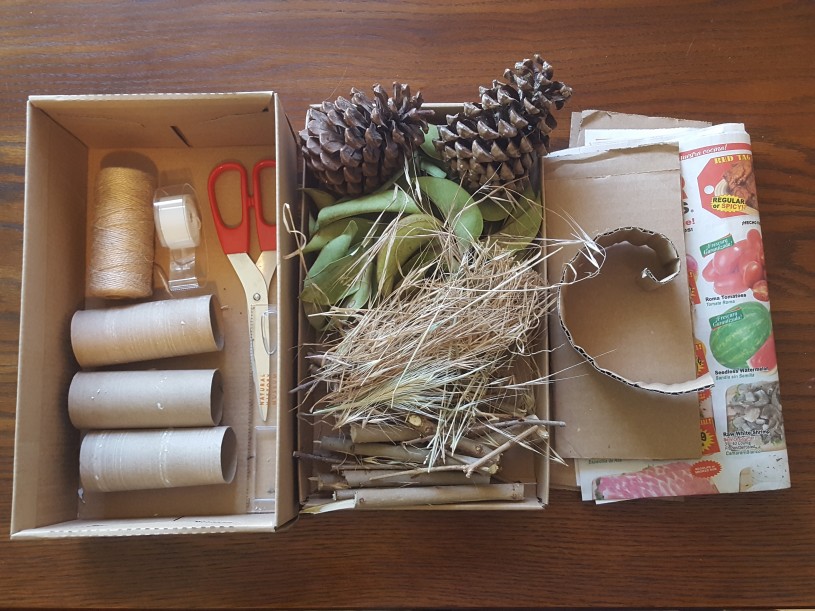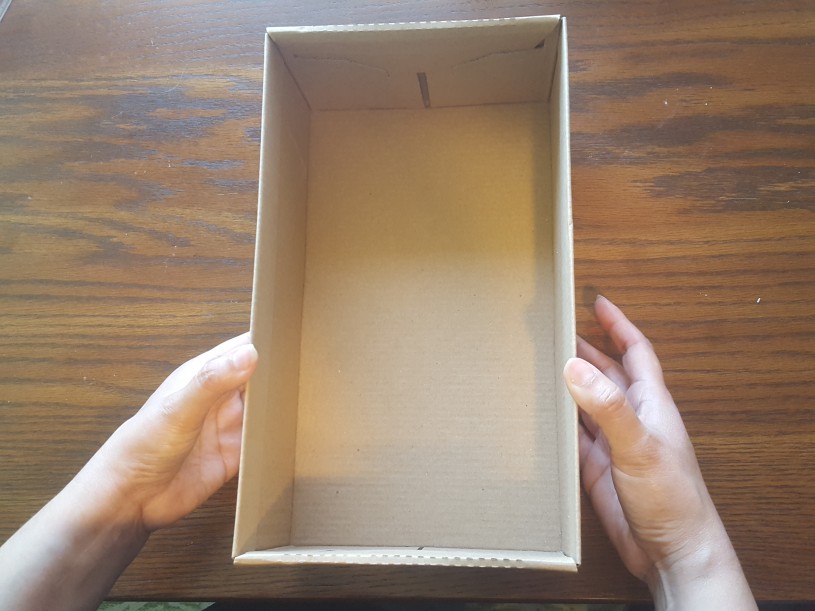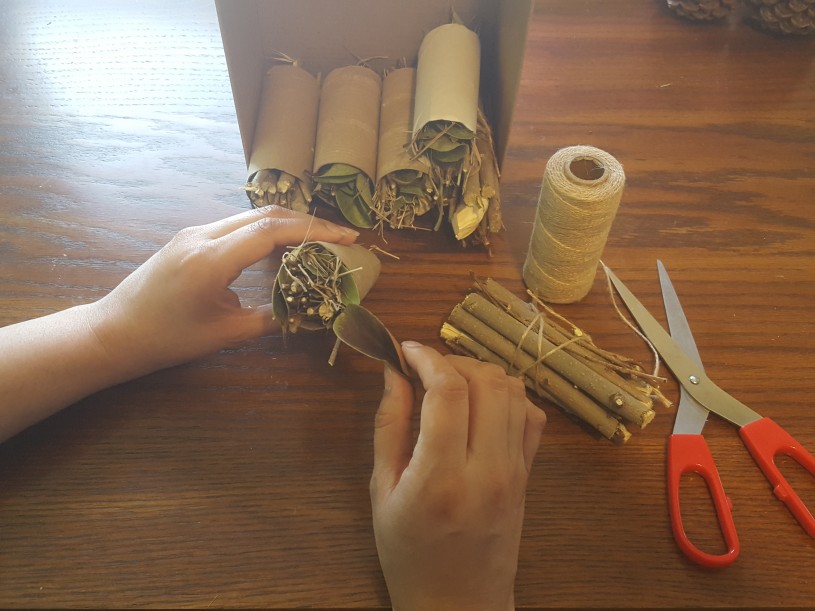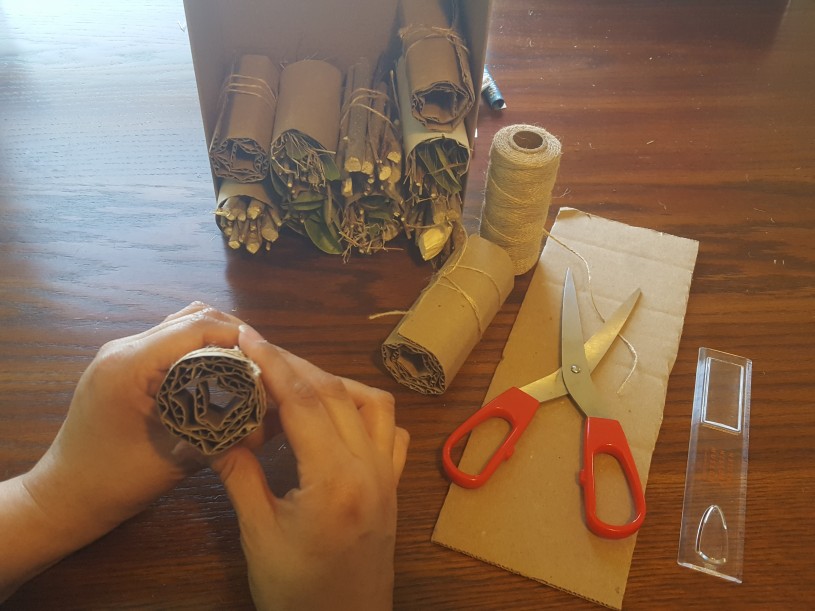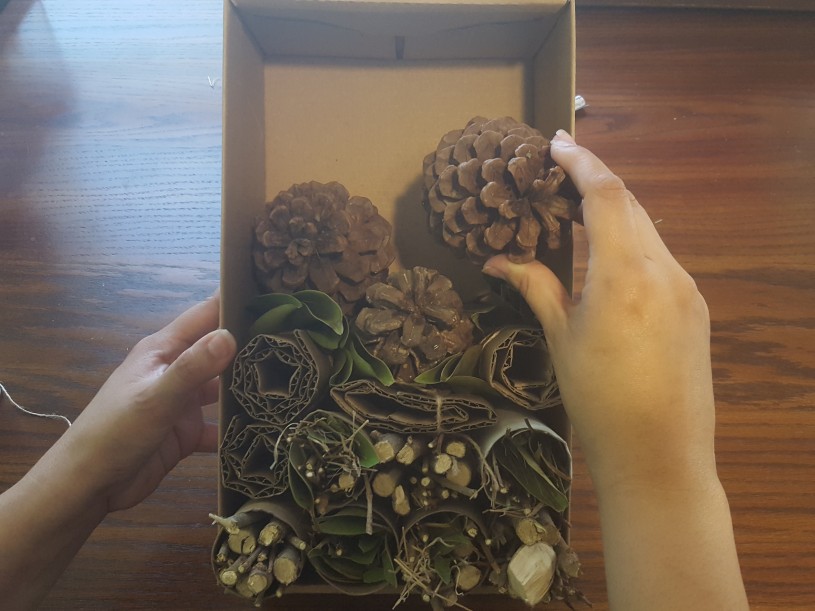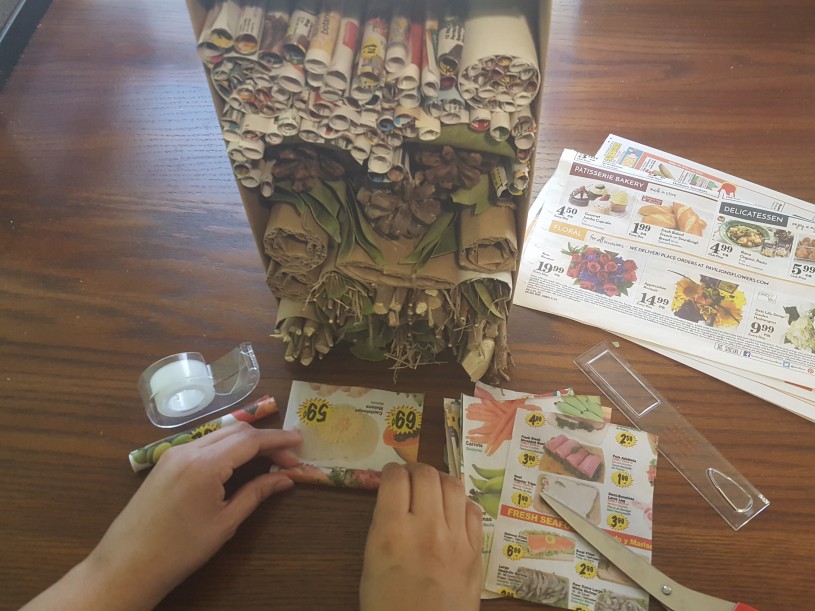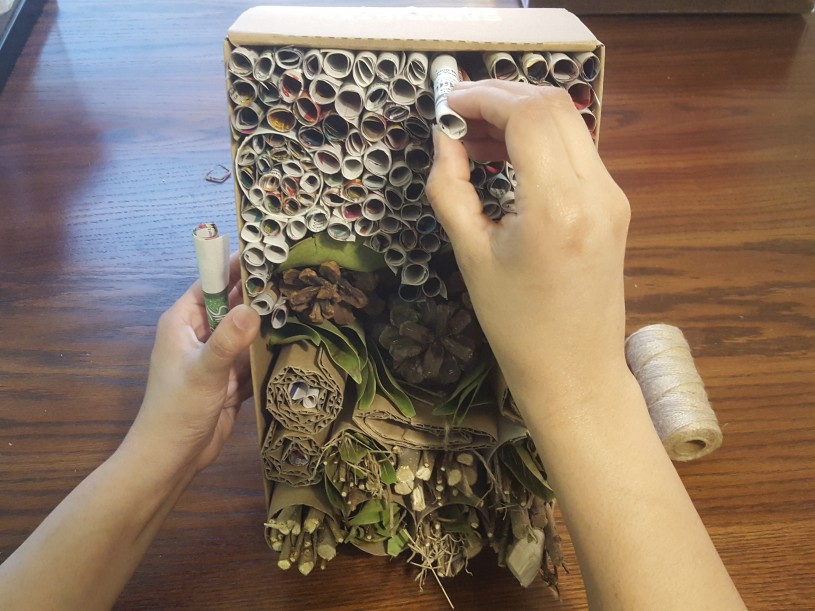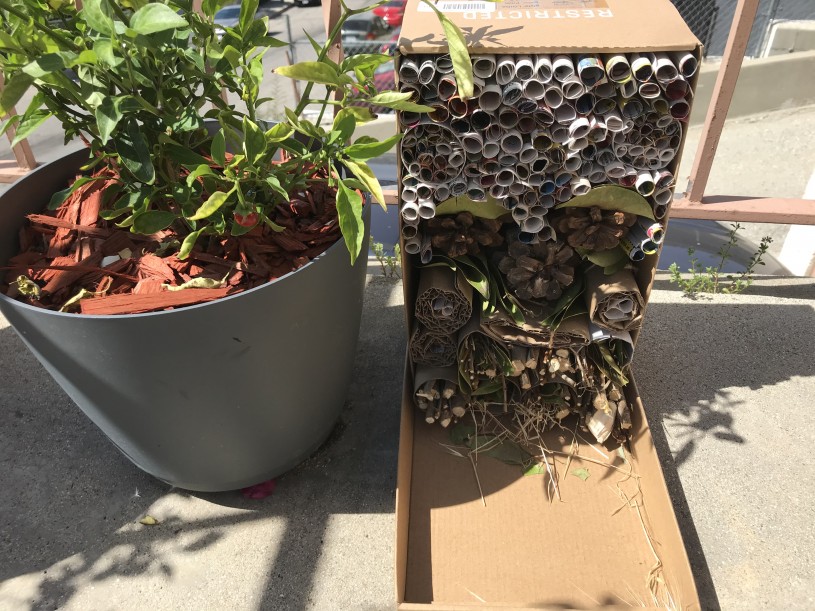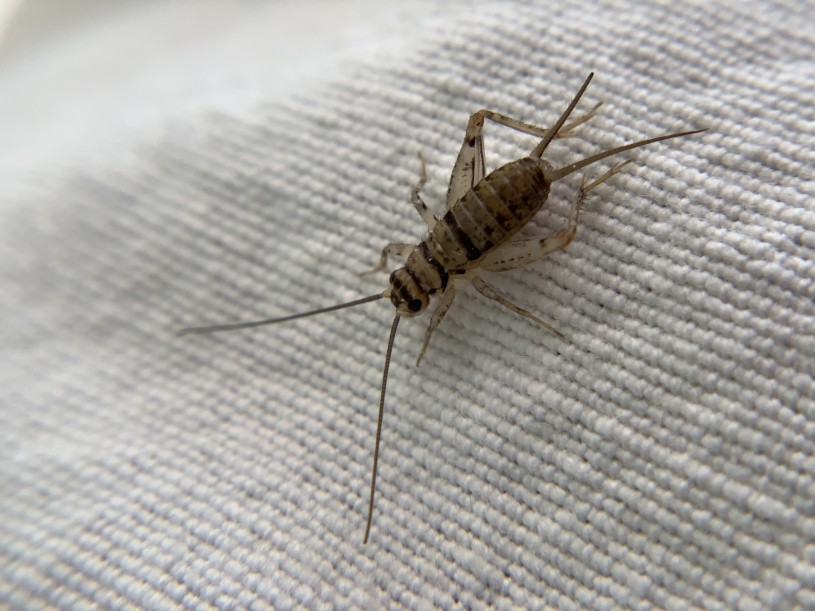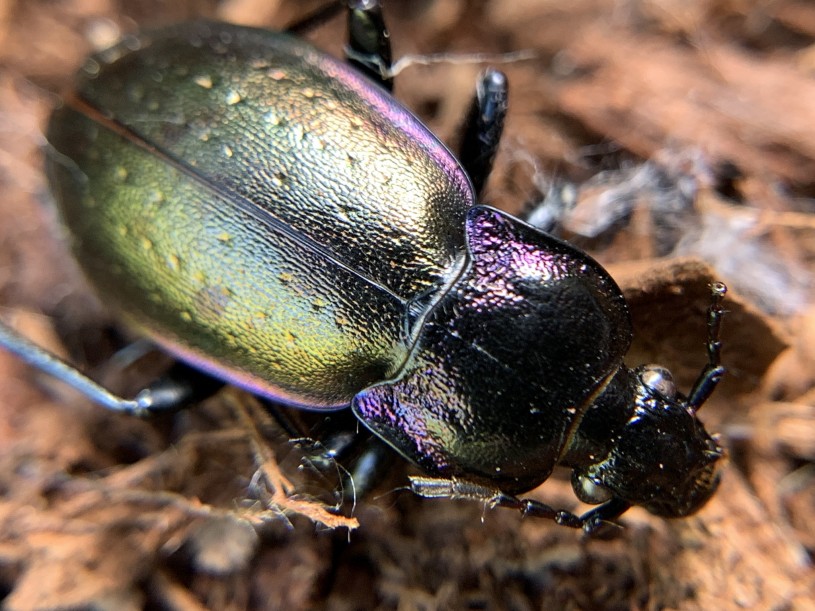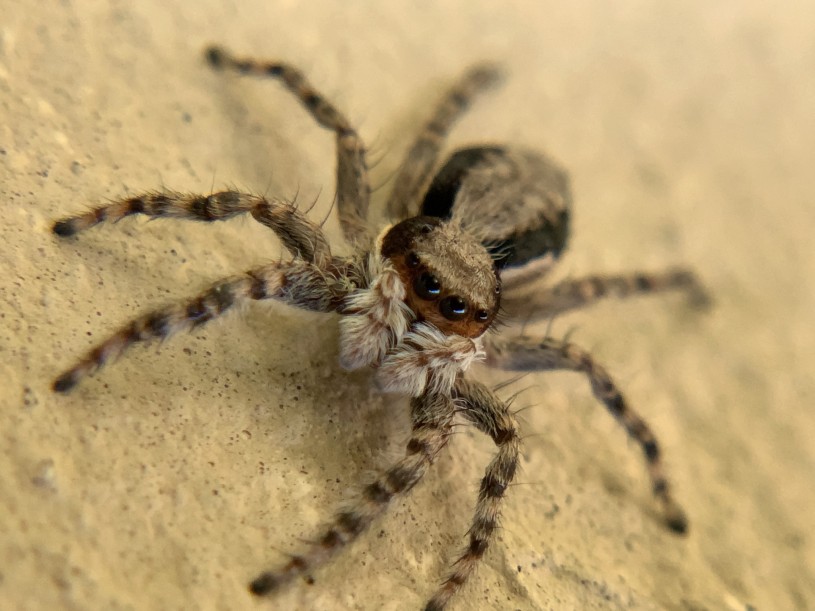Bug Hotels
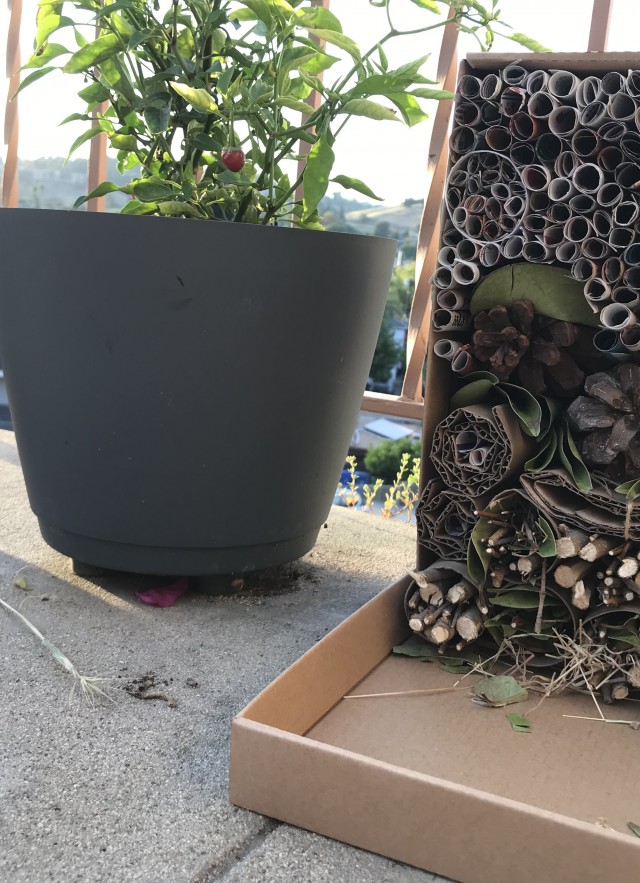
Our gardens are home to a huge range of living creatures, including bugs! They play a very important role in the garden: eating pests, pollinating plants, contributing to the ecosystem, and attracting other wildlife like birds. One way to attract bugs to your garden is to create a safe space for them to call their home. Using recycled materials, create your very own bug hotel to welcome a variety of bugs into your garden.
Supplies
Use items you have around your home! There is no need to have all the items listed below, these are just suggestions to give you some ideas:
- A frame for your Bug Hotel. Some examples:
- Shoe box [featured in this tutorial]
- Cardboard coffee can
- Milk carton
- Flower pot
- String
- Tape
- Newspaper
- Toilet paper rolls
- Corrugated cardboard (has ridges; most package boxes are made of this)
- Scissors
- Ruler or tape measure
- Natural materials you can collect from a walk outside:
- Leaves
- Sticks
- Pinecones
- Straw
Instructions
1. Choose a frame for your bug hotel. This tutorial will use a shoe box, but there are a variety of frames you can use from recycled materials. Get as creative with your frame as you’d like!
2. Starting from the bottom, start to place some of the heavier materials for your bug hotel. Using toilet paper rolls, fill the inside with sticks, leaf litter, or straw [be sure to pack the materials tightly]. Don’t have toilet paper rolls? You can also use string to bind the sticks together tightly.
3. Use the scissors to cut rectangular strips of corrugated cardboard from a box. Roll the strip of cardboard and tie the center with string so it does not unravel. [Note: If your cardboard roll sticks out too much from your box, measure the depth of your shoe box and cut it until it is the same size.]
4. If you have pinecones, add them to your bug hotel with the wider side of the pinecone towards the back of the box [fill in any open spaces with leaves, sticks or straw].
5. The least heavy materials should go on the top of your bug hotel, in this case, newspaper rolls. Roll up strips of newspaper, their center openings should vary in size - anywhere between 2 mm-10 mm [use your ruler to measure this] and tape the side of the roll so it does not unravel. [Note: If your newspaper rolls stick out too much from your box, measure the depth of your shoe box and cut it until it is the same size.]
6. If you have any open spaces, add additional sticks, leaves, straw, rolled up newspaper, or corrugated cardboard rolls until everything is tightly packed together.
7. Find a dry, sunny place in your garden or patio to place your bug hotel. Keep an eye out for any visitors!
HELPFUL TIP: When the rainy season begins, place your bug hotels under a roof or in a shed so they won’t get soaked with water. Rain will cause the materials in your bug hotel to rot, which is not healthy for your bug friends who may be hibernating. Once warm weather returns in the spring, you can return your bug hotels to the garden. [Note: Do not bring your bug hotel inside the house during winter!]
Who might visit the bug hotel?
- Crickets love to use small crevices to hide from predators and will be one of the most likely insects to make themselves at home in your hotel. You might not see them in there, but you will definitely hear them chirping away on warm nights!
- Many beetles love to hunt for prey in leaf litter or underneath potted plants. Keep an eye out for hungry ground beetles scurrying around the hotel.
- Your bug hotel is a great place for roaming spiders to set up camp, take a break from the heat, or hunt around for an afternoon snack! Jumping spiders are one example of a spider that might curiously explore your hotel.
